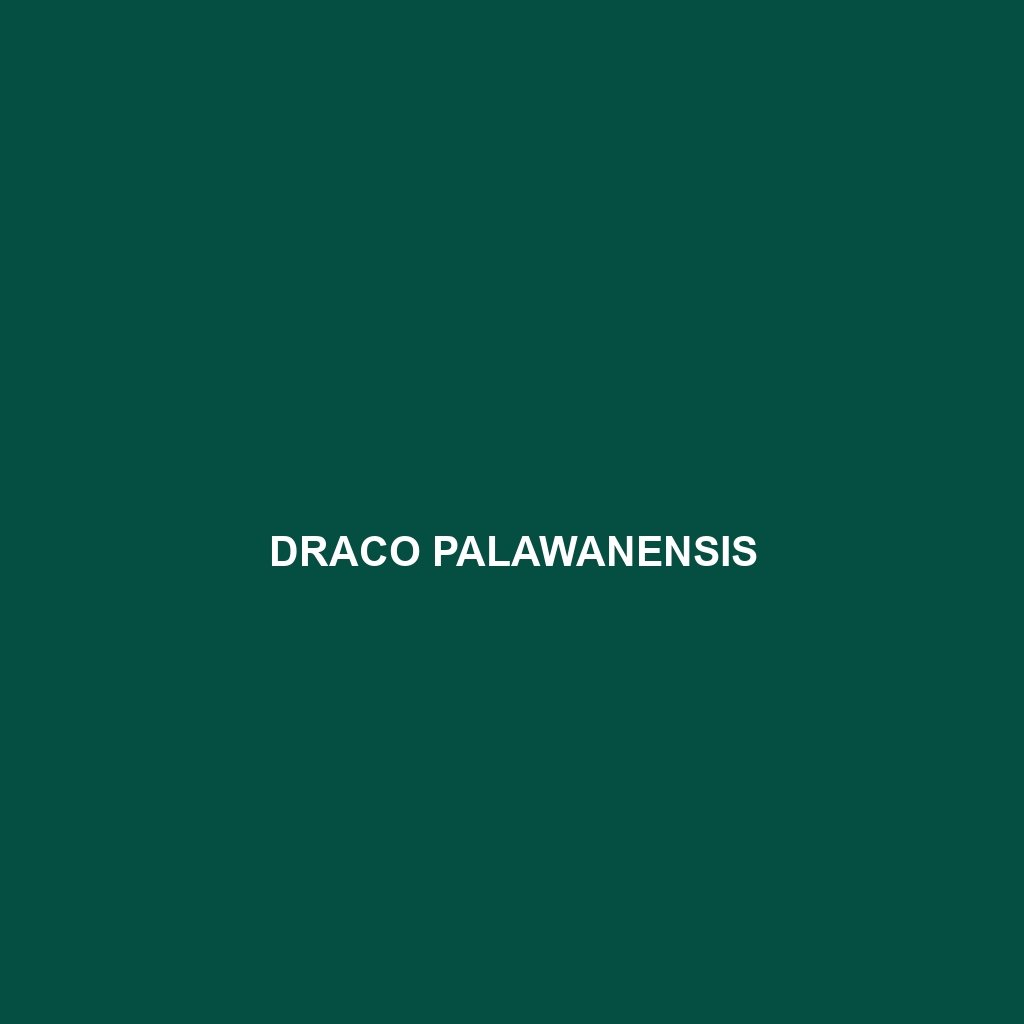Common Name
Draco ornatus
Scientific Name
Draco ornatus
Habitat
Draco ornatus, commonly known as the ornate flying dragon, is primarily found in tropical forests and rainforests of Southeast Asia and parts of Madagascar. These arboreal lizards thrive in humid, lush environments, often favoring areas where they can easily navigate between trees. Rainforests provide the required canopy cover and humidity, essential for their survival. In addition to rainforests, Draco ornatus can also inhabit nearby savannas where dispersed trees offer suitable perches for gliding. Their preference for elevations above ground allows them to exploit their gliding capabilities effectively, enabling them to evade predation and traverse between feeding territories without descending to the forest floor. These climatic conditions and environmental setups are crucial for their life cycle and feeding habits.
Physical Characteristics
The ornate flying dragon is distinguished by its striking physical features. Typically measuring between 15 to 25 centimeters in length, it boasts an elongated body and a flattened ribbed structure that forms wings used for gliding. The coloration of Draco ornatus varies from vibrant shades of green to brown, providing excellent camouflage among the foliage. These colors allow them to blend seamlessly into their environment, helping to thwart potential predators. One of the most remarkable aspects of their appearance is the presence of a colorful throat flap known as a “dewlap,” which can be extended for communication and mating displays. This dewlap comes in various colors, adding to their visual appeal and playing a vital role in attracting mates.
Behavior
Draco ornatus exhibits fascinating behaviors that enhance its survival in dense forest habitats. These lizards are not only diurnal but also display unique gliding locomotion—using the ribs of their flaps to maneuver through the air. During mating seasons, they can be observed performing intricate courtship displays, extending their colorful dewlaps to attract females. Their social behavior includes territorial displays, where males will exhibit their dewlaps and engage in posturing to ward off rivals. During the day, they prefer to bask on branches or exposed limbs, often seen soaking up sunlight before embarking on their gliding flights in search of food. Their behaviors can be characterized by agility and the ability to move seamlessly from branch to branch.
Diet
Reproduction
The reproductive cycle of Draco ornatus typically occurs during the rainy season when food availability peaks. Males will display their colorful dewlaps prominently to attract females, and after successful mating, the female will lay 2 to 4 eggs in a hidden location, such as in tree hollows or under loose bark. The gestation period lasts around 4 to 6 weeks before the eggs hatch, yielding small, fully-formed lizards ready for independent living. Parental care is minimal, as the hatchlings instinctively navigate their environment. This reproductive strategy allows for maximizing offspring in favorable conditions, ensuring population sustainability.
Conservation Status
Currently, Draco ornatus is listed as “Least Concern” according to the IUCN Red List. However, habitat loss due to deforestation and the destruction of rainforest ecosystems pose significant threats to their populations. Conservation efforts are crucial in preserving their natural habitats, and initiatives aimed at sustainable forest management are essential for maintaining the biodiversity these lizards rely on. Research on their population dynamics and habitat requirements is ongoing to better inform conservation strategies.
Interesting Facts
One interesting fact about Draco ornatus is its remarkable ability to glide. They can cover distances of over 10 meters by launching themselves from tree branches and spreading their rib-flaps wide, creating an effective gliding surface that allows for controlled directional flight. Furthermore, the ornate flying dragon is often the subject of mythology in various cultures of Southeast Asia, being seen as a symbol of agility and grace in local folklore. Their unique adaptations not only contribute to their success as a species but also make them a fascinating subject for ecological studies.
Role in Ecosystem
Draco ornatus plays a vital ecological role within its habitat. As insectivores, they help regulate insect populations, contributing to ecological balance in their forest environments. Moreover, their interactions with vegetation act as a form of natural pest control, which can benefit plant health. Additionally, their presence in the ecosystem provides food for larger predators, creating a critical link in the food web. Preserving the Draco ornatus and its habitat is essential for maintaining the health and biodiversity of tropical ecosystems.
